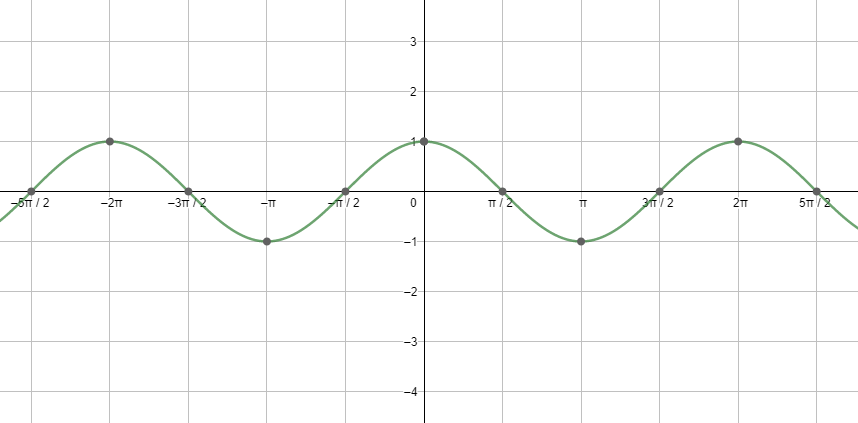Question
Question: Prove that \({{\sin }^{2}}\dfrac{\pi }{18}+{{\sin }^{2}}\dfrac{\pi }{9}+{{\sin }^{2}}\dfrac{7\pi }{1...
Prove that sin218π+sin29π+sin2187π+sin294π=2 .
Solution
Hint: Try to simplify the left-hand side of the equation that we need to prove by using the relation of complementary angles between sine and cosine function. The formulas that you might need includes sin(90∘−α)=cosα and sin(90∘+α)=cosα .
Complete step-by-step answer:
Before moving to the solution, let us discuss the periodicity of sine and cosine function, which we would be using in the solution. All the trigonometric ratios, including sine and cosine, are periodic functions. We can better understand this using the graph of sine and cosine.
First, let us start with the graph of sinx.

Next, let us see the graph of cosx.

Looking at both the graphs, we can say that the graphs are repeating after a fixed period i.e. 2πc . So, we can say that the fundamental period of the cosine function and the sine function is 2πc=360∘
We will now solve the left-hand side of the equation given in the question.
sin218π+sin29π+sin2187π+sin294π
sin218π+sin29π+sin2(2π−9π)+sin2(2π−18π)
Now we know cos(2π−x)=sinx . On putting these values in our expression, we get
sin218π+sin29π+cos29π+cos218π
Now we know cos2x+sin2x=1 .
sin218π+cos218π+sin29π+cos29π
=1+1
=2
As we have shown that the left-hand side of the equation given in the question is equal to the right-hand side of the equation in the question, which is equal to 2 . Hence, we can say that we have proved that sin218π+sin29π+sin2187π+sin294π=2 .
Note: Be careful about the calculation and the signs while opening the brackets. The general mistake that a student can make is 1+x-(x-1)=1+x-x-1. Also, you need to remember the properties related to complementary angles and trigonometric ratios.
